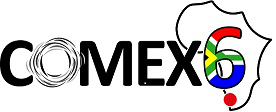Speaker
Description
Weak-interaction rates in several nuclear mass regions are studied in scenarios characterized by densities and temperatures of astrophysical interest. The study includes even-even and odd-A nuclei in the pf-shell region, as well as neutron-deficient and neutron-rich medium-mass isotopes. Nuclei in these mass regions are involved in presupernova formations, in the rapid proton and in the rapid-neutron capture processes, respectively. The weak rates of these selected nuclei, including beta-decay and electron capture, are relevant to understand the late stages of the stellar evolution and the nucleosynthesis of heavier nuclei [1,2].
The nuclear structure involved in the weak processes is described within a quasiparticle proton-neutron random-phase approximation with residual interactions in both particle-hole and particle-particle channels on top of a deformed Skyrme Hartree-Fock mean field with pairing correlations [3].
In a first step, the energy distributions of the Gamow-Teller strength, as well as the beta-decay half-lives are discussed and compared with the available experimental information, measured under terrestrial conditions from beta-decay in the case of the unstable nuclei [4,5] and from charge-exchange reactions in the case of stable nuclei [6]. Subsequently, the sensitivity of the weak-interaction rates to both astrophysical densities and temperatures is studied [7]. Two issues are particularly addressed. First, the relative contribution of thermally populated excited states in the decaying nucleus to the total rates and secondly, the electron captures from the degenerate electron plasma in the star that can modify substantially the electron-capture rates measured in the laboratory.
REFERENCES
[1] H. Schatz et al., Phys. Rep. 294, 167 (1998).
[2] M. Arnould, S. Goriely, and K. Takahashi, Phys. Rep. 450, 97 (2007).
[3] P. Sarriguren, E. Moya de Guerra, and A. Escuderos, Nucl. Phys. A 691, 631 (2001).
[4] E. Nacher et al., Phys. Rev. Lett. 92, 232501 (2004).
[5] P. Sarriguren, Phys. Rev. C 91, 044304 (2015); Phys. Rev. C 95, 014304 (2017).
[6] P. Sarriguren, Phys. Rev. C 87, 045801 (2013); Phys. Rev. C 93, 054309 (2016).
[7] P. Sarriguren, Phys. Lett. B 680, 438 (2009); Phys. Rev. C 83, 025801 (2011).

